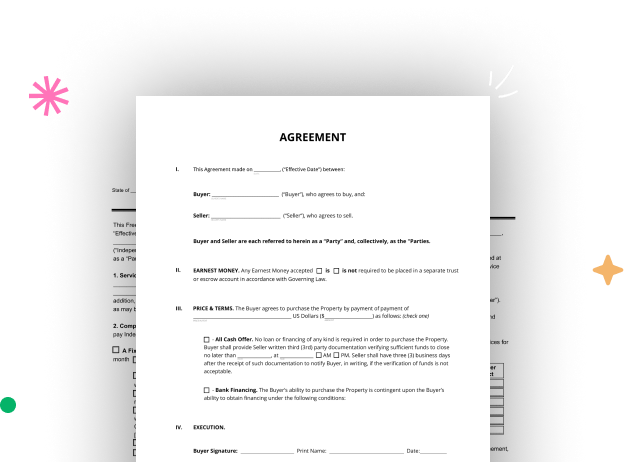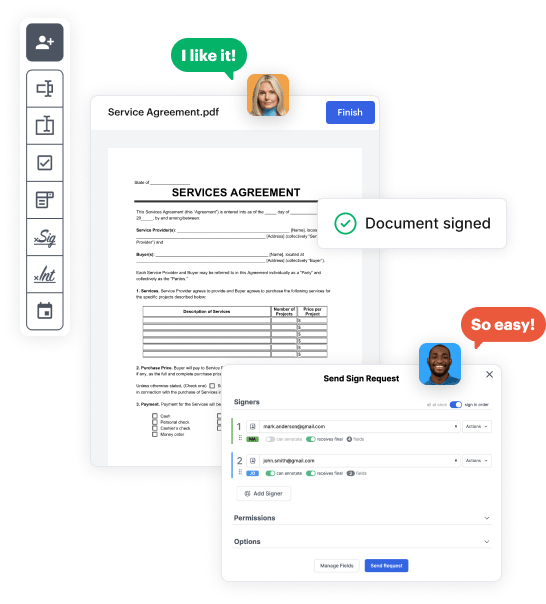

Start by signing up for a free DocHub account using any offered sign-up method. Simply log in if you already have one.
Try out the whole set of DocHub's pro tools by signing up for a free 30-day trial of the Pro plan and proceed to build your Residential Rental Agreement Form.
In your dashboard, hit the New Document button > scroll down and hit Create Blank Document. You will be redirected to the editor.
Utilize the Page Controls icon indicated by the arrow to toggle between different page views and layouts for more convenience.
Navigate through the top toolbar to place document fields. Add and format text boxes, the signature block (if applicable), embed images, etc.
Arrange the fields you incorporated based on your desired layout. Adjust each field's size, font, and alignment to ensure the form is straightforward and neat-looking.
Save the finalized copy in DocHub or in platforms like Google Drive or Dropbox, or design a new Residential Rental Agreement Form. Send out your form via email or use a public link to engage with more people.